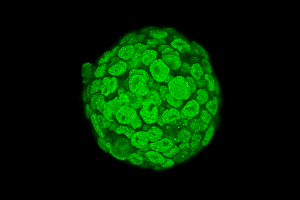All nitpicking aside (this author’s included), the substantial donations drawn from the Ice Bucket Challenge in 2014 have resulted in an equally substantial gain for humankind.
The over 140 million dollars of donations to amyotrophic lateral sclerosis (ALS) research has led to a breakthrough in understanding how and why this “rapidly progressive, invariably fatal neurological disease that attacks the nerve cells (neurons) responsible for controlling voluntary muscles (muscle action we are able to control, such as those in the arms, legs, and face)” works, as well as how it can be cured.
In essence, those people who were criticising this seemingly ridiculous act of pouring ice over one’s head as a classic example of “slaktivism” have been proven wrong, including yours truly.
The breakthrough in the research of ALS comes from Philip Wong Ph.D. and graduate student Jonathan Ling, who was the first author of the new paper, published in the journal Science, which reveals the role of a protein known as TDP-43 plays in the degenerative disease.
Scientists had previously discovered that TDP-43 was clumped up in unusual ways in ALS patients, “TDP-43’s role in both healthy and diseased cells has long been a mystery, and we hope that solving it will open new pathways toward preventing and treating ALS and FTD,” says Wong.

A decade ago, scientists were not sure whether the clumping of this protein was the cause or effect of this disease, “Some people thought that the aggregates themselves were toxic,” says Ling. “Another theory is that the aggregates were just preventing TDP-43 from doing what it should be doing, and that was the problem.”
However, according to the new research, the discovery of cryptic exons, or nucleotide sequences that have been spliced in mysterious or unknown ways, are also present in patients with ALS.
According to the Science article cited above, “TDP-43 only recognizes one particular class of cryptic exon, but other proteins can block many types of exons, so Ling and Wong next tested what would happen when they added one of these blocking proteins to directly target cryptic exons in cells missing TDP-43. Indeed, adding this protein allowed cells to block cryptic exons and remain disease-free.”
“What’s thought provoking is that we may soon be able to fix this in patients who have lots of accumulated TDP-43,” says Ling.
According to the CDC, ALS affects more than 12,000 people in the U.S., and it is one of the most common neuromuscular diseases worldwide, affecting people of all races and ethnic backgrounds.
Because this research is still in the beta phase, the researchers and others have decided it would be worth while to make the Ice Bucket Challenge a yearly event.
“We want to… really push this work forward,” Wong says
This article (How the Ice Bucket Challenge Led to an Important ALS Breakthrough) is free and open source. You have permission to republish this article under a Creative Commons license with attribution to the author and TrueActivist.com.


